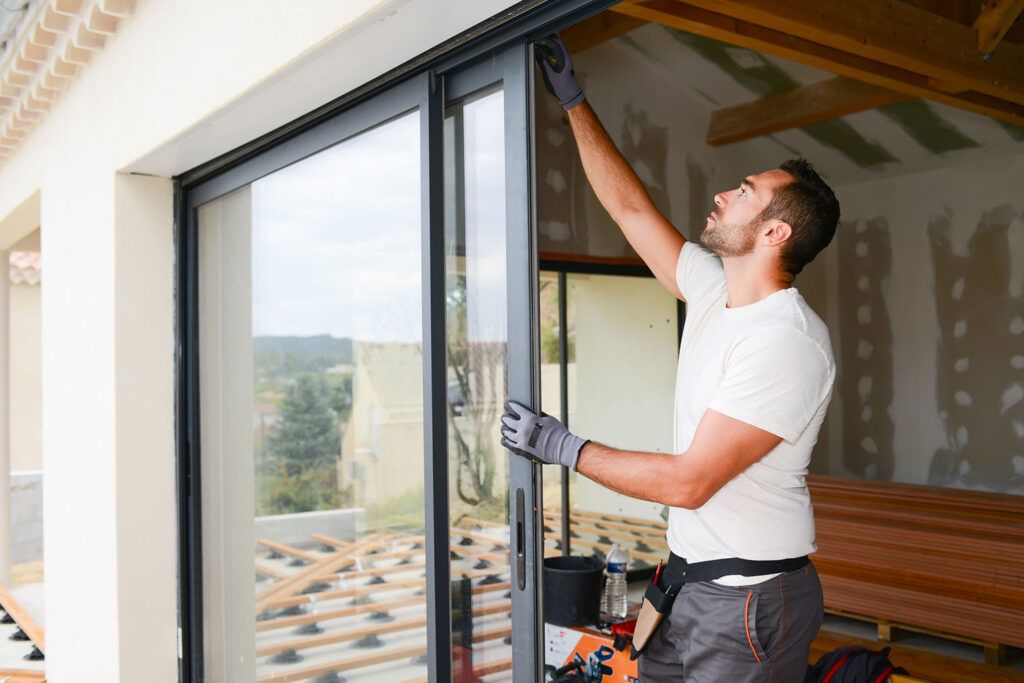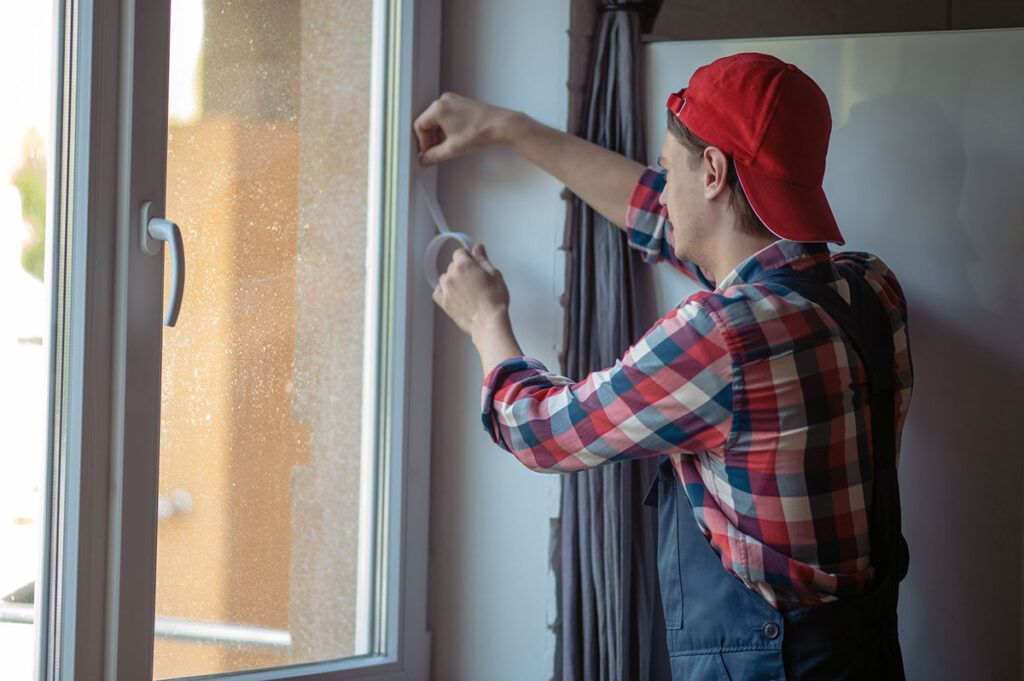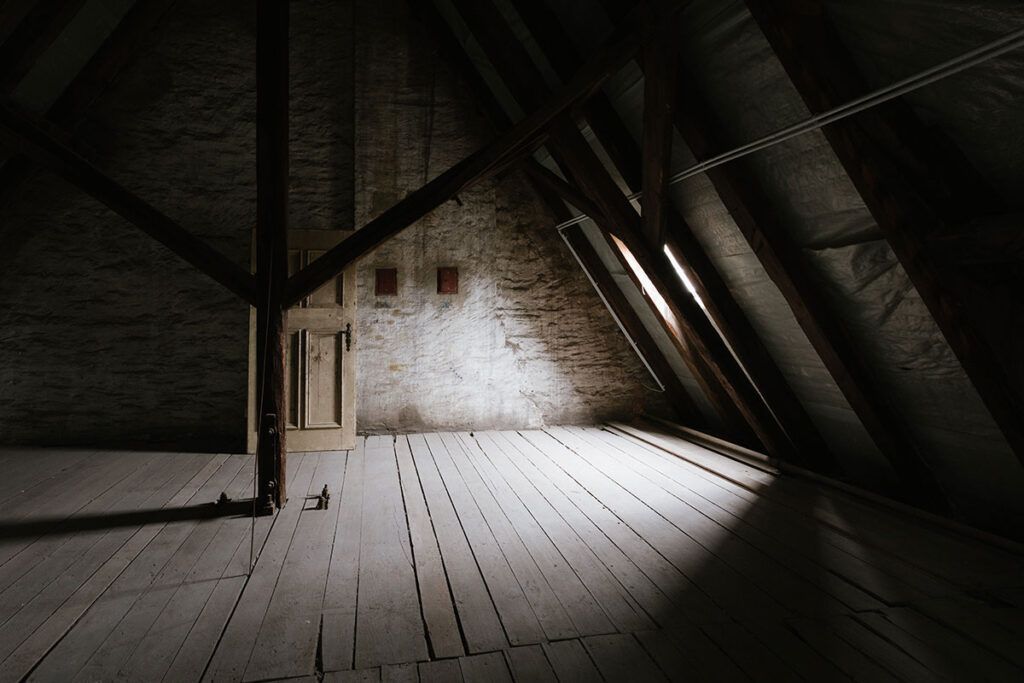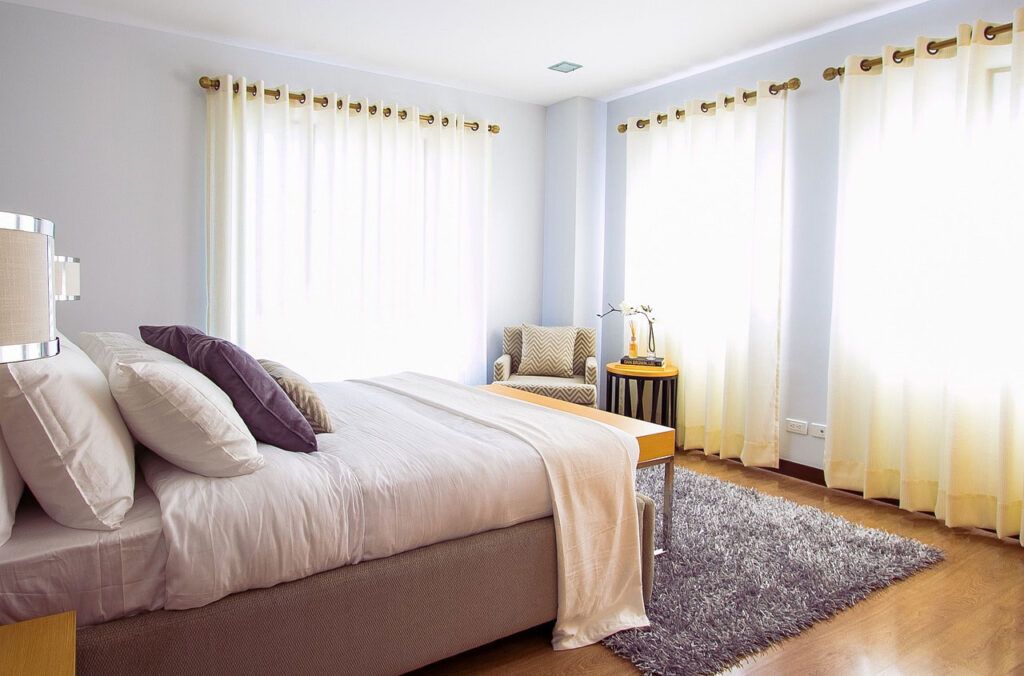How To Weatherproof Your Home

Learning how to weatherproof your home can be one of the best ways to save money on energy bills – which is often one of the expenses homeowners worry about the most. Whether your home is difficult to keep warm in cold weather or you live in a warm climate where air conditioning is usually necessary, air leaks can significantly cut into your finances. Learning how to weatherproof a house can save you money and extend the life of your home.
Benefits of Weatherproofing Your Home

Weatherproofing a home refers to steps taken to keep the outside elements out of the home. For example, weatherproofing can include preventing heavy rain from seeping in or replacing old windows to prevent air leaks.
Weatherproofing helps you spend less money over time. It’s a necessary part of home improvement that keeps your house in good repair. Taking steps such as updating insulation, adding a storm door, and taking other precautions can significantly help you save money on utility bills.
How To Weatherproof Your Home in 10 Steps
If you want to know how to save on your electric and gas bills but aren’t sure how to winterize your home or weatherproof your home for summer, you’ve come to the right place.
- Stop Energy Loss and Outside Air Leaks by Weatherstripping
- Install Storm Windows and Doors
- Add Insulation to Your Hot Water Tank
- Upgrade the Siding and Shingles
- Refresh Your Attic’s Insulation
- Keep Your Gutters Clean
- Switch to a Programmable Thermostat
- Add the Right Window Coverings
- Remove or Cover Your Air Conditioner When Summer’s Over
- Use Plastic to Stop Window Air Leaks
The following weatherproofing tips vary in cost, with some requiring a heftier investment but yielding more long-term savings.
1. Stop Energy Loss and Outside Air Leaks by Weatherstripping

One of the easiest changes you can make to your home to prevent heat loss or air drafts from making their way into your home is weatherstripping.
Weatherstripping is the process of sealing around windows and doors to stop air leaks into and out of your home.
Special weather strips are made for this purpose. They’re usually made from thin foam with adhesive on one side, allowing them to stick to door and window frames as you place them. However, several types of weatherstrips are available for different needs. For example, some designs are more tape-like, allowing them to fit in tight corners.
If you have spaces in your home causing air drafts, like a laundry room or bathroom connected to an outside wall, consider closing the doors to those spaces and using draft stoppers at the bottom of the door to prevent an air leak.
2. Install Storm Windows and Doors
Storm windows and doors offer an extra layer of protection against your existing windows and doors to keep air leaks out. They can be especially beneficial in older homes, which may still have their original single-pane windows installed, which are known for contributing to air leaks and making it more difficult to keep rooms warm or cool.
Storm windows can be fitted on the exterior or interior of your windows, depending on how your current windows are installed. Although they provide similar protection as newly installed windows, they are just a fraction of the cost, which could be a much more affordable upgrade if you don’t have window replacements in your current budget. Storm doors are typically available from anywhere between $150 and $800.
3. Add Insulation to Your Hot Water Tank
When your hot water tank gets older, it has to work harder to heat the water in your home. Even new hot water tanks can struggle to heat efficiently when they’re stored in an area that stays relatively cold, like the basement. The water heater goes through a continuous cycle of creating hot water, which eats into your energy costs.
Insulating the hot water tank can help the appliance do its job more effectively, and you can find insulated blankets made specifically for this purpose. Look for one that fits the size of your hot water tank for the best results. Also, be sure to inspect the blanket’s condition at least once a year, replacing it when it shows signs of wear.
4. Upgrade the Siding and Shingles
Your home’s siding and shingles protect its structure, which is essentially what keeps your house strong. It can mean massive issues for your home when they wear down over time. Worn-down shingles and siding can lead to water leaks, which interfere with the structural integrity of a home.
Your siding and shingles also play an important part in your home’s efficiency, helping to keep cool air in during the summer and warm air in during the winter. As you might guess, replacing them can be costly, but it’s a necessary part of owning a home. Consider upgrades that can improve the longevity of your investment, like reinforced siding, rubberized shingles, or a metal roof.
5. Refresh Your Attic’s Insulation

Much of your home’s heat or air conditioning can escape through the attic, making it crucial to keep your attic well insulated. If you don’t know the last time your attic has been reinsulated, there’s a good chance it hasn’t had an upgrade since it was built. In that case, it’s probably time for a refresh.
You can do a quick insulation audit of your attic on your own. Check that there are no bare spots in its current insulation and that there is plenty of insulation in the rafters and between floor joists. Also, check that the areas around windows and doors are sealed well to prevent air leaks.
6. Keep Your Gutters Clean
Keeping your gutters clean is one of the easiest things you can do to maintain and weatherproof your home. Gutter systems collect and move rainwater away from your home’s structure to help prevent leaks from making their way into siding, an attic, or the home’s foundation. When clogged, the rainwater has no choice but to enter your home instead.
For most homes, cleaning gutters twice a year is plenty. However, homes with lots of surrounding trees may need more frequent gutter cleanings to remove tree debris, like pine needles, leaves, or acorns. If your gutters are too high for you to reach safely with a ladder, you can hire a handyperson or contractor to clean them for you. Depending on the size of your home, you can expect to pay anywhere from $100 to $400 for a full gutter cleaning, which is a small price to pay to maintain an efficient flow of rainwater.
7. Switch to a Programmable Thermostat
A programmable thermostat is a must-have addition to your home if you’re trying to lower your heating bill or cooling costs, therefore also making it one of the best weatherproofing devices. These thermostats operate on a schedule you set, allowing you to control your heating and cooling even when you’re away from home.
For example, you can set your home to a higher temperature when you’re on vacation for the summer to prevent the central air from kicking on as often. Or, set the thermostat to a lower temperature overnight in the winter to keep the heat from turning on as much as you might need it to during the day.
Many modern programmable thermostats connect to mobile apps to help you monitor and control the device from anywhere.
8. Add the Right Window Coverings

Upgrading your window coverings is a simple change that could make the difference between your home feeling the warmth of the sweltering summer sun and staying nice and cool despite the heat. Some window coverings are designed to block the sun’s rays and heat better than others, helping you maintain the cold air from the air conditioning inside your home.
If you have the budget for them, think about installing cellular shades, which offer an extra layer of insulation over windows. Alternatively, stick with a more affordable option, like blackout curtains, which can repel some heat from the sun to keep your rooms cool.
9. Remove or Cover Your Air Conditioner When Summer’s Over
Installing and removing window air conditioning units can be quite a task, depending on their size and the number of air conditioning units you have in your home. Although the easier option would be to keep them in place throughout the year, it’s not the best choice for your home’s weatherproofing needs.
If possible, remove your air conditioning units after you’ve finished using them for the summer. If you can’t remove them, consider getting covers to place on the external part that extends from the window. Alternatively, some covers can fit snugly over the indoor part of the air conditioner for easier access. Either way, they protect against chilly wind gusts entering your home and help keep your warm air inside where it belongs.
10. Use Plastic to Stop Window Air Leaks
Placing plastic over your windows in the winter doesn’t have the most curb appeal, but it can help you weatherproof your home. Durable plastic wrap made for windows can add a layer of insulation that prevents air leaks in and out of the house.
For the best results, look for a kit with shrink-fit plastic, which seals to your windows with the help of heat from a hair dryer.
Get Help Weatherproofing Your Home to Save Energy Costs

It can take some time to see the positive effects of weatherproofing your home. If you need help paying your cooling or heating bill, consider applying for the Low Income Home Energy Assistance Program, also known as LIHEAP. LIHEAP helps households pay their energy costs by providing bill credits to their accounts through energy suppliers. Applicants must show proof of their income and energy bills to be eligible.
LIHEAP also offers the Weatherization Assistance Program (WAP), designed to help people who are eligible for LIHEAP make necessary weatherproofing upgrades to their homes. WAP programs vary by state, but many of them provide services like installing programmable thermostats, insulating walls, insulating hot water tanks, repairing air leaks in ductwork, and sealing around doors and windows where air leaks are present.
Check with your local health and human services department or your energy company for details about LIHEAP or WAP.
Improve Energy Efficiency with Routine Weatherproofing Checks
Now that you know how to weatherproof your home, you should get into the habit of completing routine weatherproofing checks. At least annually, inspect your windows, door seals, and ductwork for air leaks. Check your hot water tank’s insulation and make sure all storm windows and doors are in good repair. When you can budget for them, consider adding efficient upgrades to your home’s exterior or interior, like solar panels, new insulation, or high-quality exterior doors. Focusing on just one problem area at a time can take you several steps closer to a weatherproofed home. Until then, keep these weatherproofing tips in mind to keep your home in good shape and protected from weather damage.